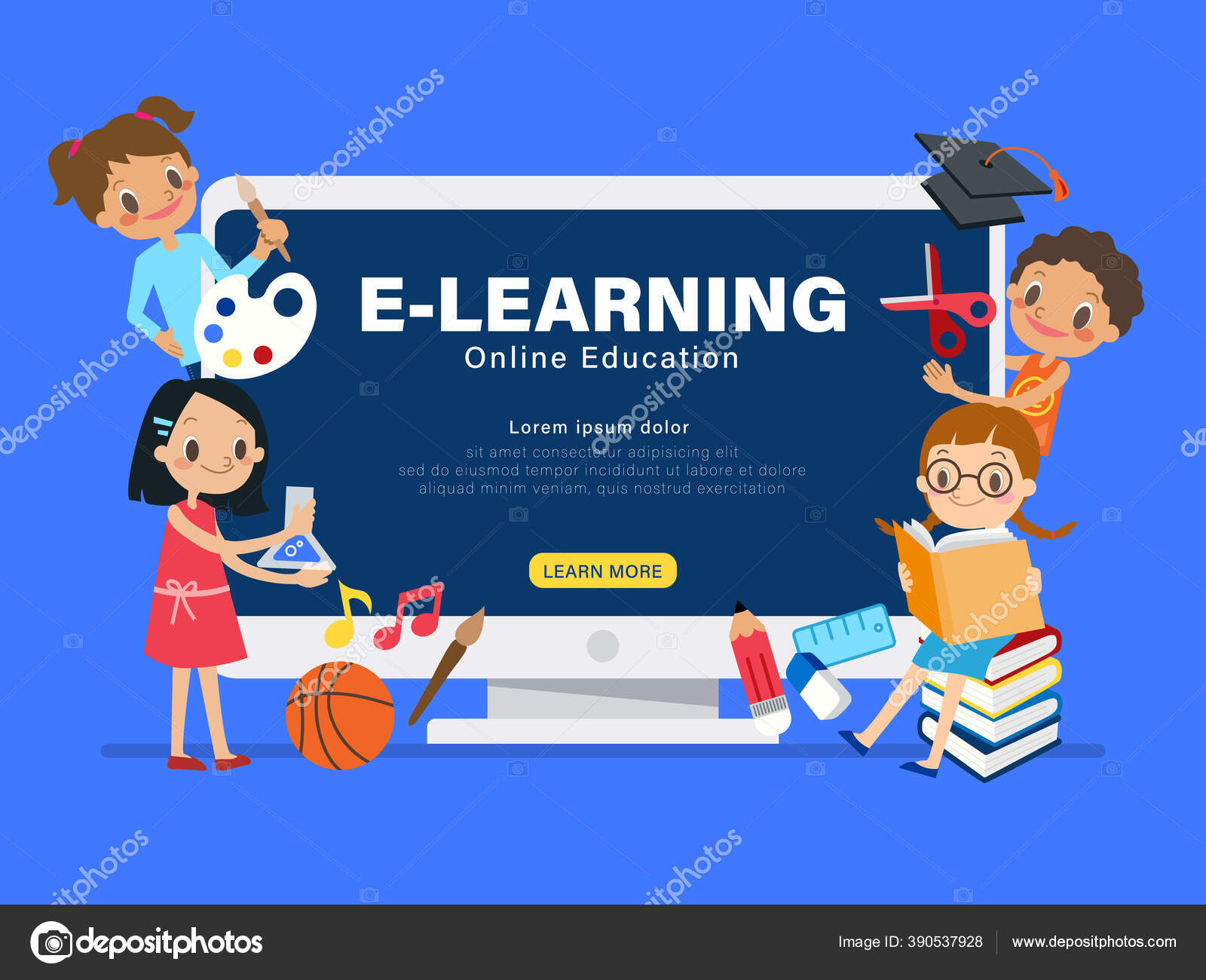The Role of E-Learning fit the Future of Education And Learning for Kids
As typical education and learning systems evolve, the integration of e-learning is emerging as a crucial pressure in shaping the future of education for children. Comprehending the complete degree of this influence requires taking a look at the complex effects of e-learning's duty in modern-day education and learning systems.
Interactive Understanding Settings
In the world of e-learning for kids, interactive discovering atmospheres have emerged as pivotal tools in enhancing educational end results. Education and study for children and kids. These electronic systems integrate multimedia elements such as videos, animations, and gamified workouts to create a engaging and vibrant academic experience. Especially, they change passive discovering into an energetic procedure, thus fostering much better retention and comprehension

Online classrooms and discussion forums enable students to share ideas, ask inquiries, and team up on jobs, duplicating the benefits of typical classroom communications. Interactive understanding settings are not simply supplementary educational devices however vital parts that enhance the learning ecosystem for youngsters.
Individualized Education And Learning Paths
Using the potential of individualized education paths changes the learning experience for kids by providing to their distinct requirements and abilities. E-learning platforms, nevertheless, can make use of advanced algorithms and information analytics to tailor academic web content, pace, and techniques to each youngster's details demands.
Personalized education paths also empower educators by providing detailed insights into student progress. Conversely, students excelling in particular topics can progress without being held back by a standard educational program.
Moreover, e-learning systems can incorporate diverse discovering resources, such as interactive simulations, multimedia content, and gamified lessons, to align with different learning styles. By suiting aesthetic, auditory, and kinesthetic learners, individualized education and learning courses make sure that each child gets one of the most efficient educational approaches. Education and study for children and kids. Hence, leveraging customized education courses with e-learning contributes in producing a future-proof, comprehensive, and reliable academic landscape for children
Enhancing Ease Of Access
While the benefits of tailored education paths are substantial, improving ease of access is just as essential to make certain that e-learning systems can reach all youngsters, irrespective of their socio-economic history or geographic place. Digital inclusion is vital to bridge the instructional divide and supply equitable discovering opportunities. This can be achieved with the development of low-cost, top notch e-learning services that come on varied devices, consisting of mobile phones, tablet computers, and computers.
In addition, partnerships in between federal governments, non-profits, and exclusive industries can facilitate the distribution of needed modern technology and web accessibility to underserved communities. Such cooperations can also sustain the creation of localized web content in various languages, making certain cultural importance and understanding.
Furthermore, flexible learning innovations can be customized to fit children with disabilities, supplying functions like text-to-speech, adjustable text sizes, and interactive aspects that cater to different understanding demands. These advancements not just democratize education but also empower learners by offering tools that provide to individual challenges.
Developing Crucial Skills
With ease of access enhancements in position, the next imperative element to address is the advancement of important abilities among young learners. E-learning systems supply an unique possibility to grow a variety of essential skills that typical class setups might have a hard time to deal with comprehensively. Amongst these are essential reasoning, analytical, and digital literacy, which are increasingly important in the contemporary world.

In addition, e-learning platforms frequently incorporate joint devices like discussion online forums, group tasks, and peer testimonials, which foster interaction and teamwork important site skills. These systems also subject pupils to a huge array of electronic devices and resources, improving their electronic literacy. As trainees browse different software application, applications, and on the internet sources, they become proficient at making use of technology successfully and responsibly.
Fundamentally, e-learning not just supplements standard education but likewise furnishes pupils with the vital abilities necessary to thrive in an interconnected and increasingly electronic world.
Overcoming Geographical Barriers
The development of e-learning has actually significantly reduced the geographical obstacles that generally prevented accessibility to top quality education. Prior to the digital revolution, trainees in remote or impoverished locations usually faced limited educational resources and opportunities. E-learning platforms now connect this space, supplying universal access to high-grade instructional web content no matter of area.
Through online classes, virtual collections, and interactive devices, pupils from varied geographical histories can involve with the very same educational program supplied in municipal colleges. This democratization click here for more info of education and learning makes sure that every kid, irrespective of their physical location, has the potential to attain scholastic success. E-learning promotes accessibility to specific subjects and experienced trainers that may not be available locally.
Moreover, e-learning allows real-time cooperation between trainees and educators from different parts of the globe, fostering an international knowing neighborhood. The duty of e-learning extends beyond plain convenience; it is a transformative device that redefines access in education and learning.
Conclusion
E-learning is essential fit the future of education for children by creating interactive and individualized learning settings. It enhances ease of access, promotes essential skill development, and conquers geographical barriers, making sure all pupils access to top quality educational sources. This electronic transformation equips learners with the tools needed for academic and professional success, promoting inclusivity and collaboration on a global range. E-learning, therefore, stands as a keystone in the advancement of modern-day education and learning.
As typical education and learning systems progress, the combination of e-learning is emerging as a pivotal force in forming the future of education for children. Hence, leveraging tailored education paths via e-learning is critical in producing a future-proof, inclusive, and reliable academic landscape for children.
While the benefits of customized education paths are considerable, improving availability is equally important to make sure that e-learning platforms can reach all children, regardless of their socio-economic history or geographical area. The role of e-learning extends past mere convenience; it is a transformative device that check it out redefines availability in education.
E-learning is critical in shaping the future of education for youngsters by developing interactive and tailored understanding environments.